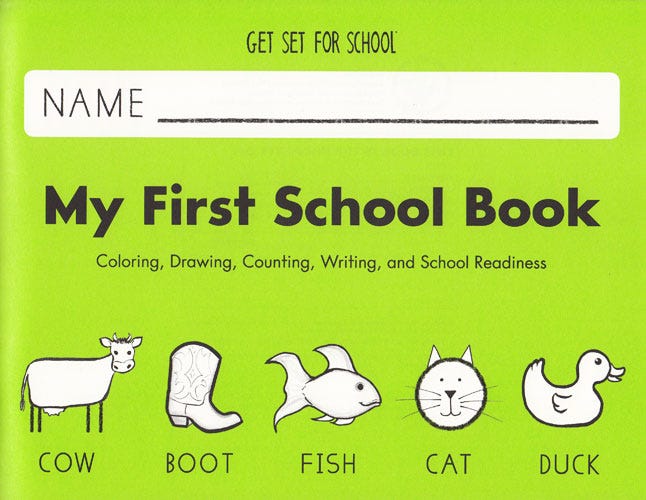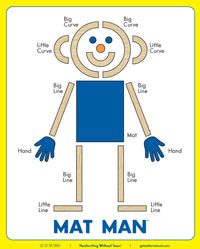

Three Core Learning Areas
Get Set for School is our curriculum that prepares young learners for school with three complete programs: Readiness and Writing, Language and Literacy, and Numbers and Math. These programs engage children with the following strategies:
*Creative lessons that enable children of different abilities to achieve
*Child friendly language and activities
*Developmentally based teaching that works at every level
*Hands on approach that promotes active participation

Readiness and Writing
The Readiness and Writing Program is the core of our Get Set For School curriculum. The handwriting component is based on more than 25 years of success with the Handwriting Without Tears Program. Writing requires many skills that are essential for school: physical, language, cognitive, social, and perceptual. The Readiness and Writing program uses music, movement, and multisensory manipulatives to teach all the core readiness skills, including crayon grip, letter and number recognition, number and capital letter formation, and body awareness.

Language and Literacy
We use dramatic play, singing, finger plays, manipulatives, and movement to learn to rhyme, clap syllables, make and break compound words, and identify sounds. The language and literacy part of our program also exposes children to rich literature to help foster a love of reading, build vocabulary, and learn how books work. Children also learn facts from informational text, learn to use new words and develop oral language skills by listening, retelling, and narrating stories. Plus, children learn that there is meaning in the words they say as they watch their teacher write what they say during shared writing activities.
.jpg)
Numbers and Math
In the Numbers and Math part of our program we use manipulatives, music, and rhymes, to teach counting, comparisons, spatial awareness, patterning, sequencing, matching, sorting, problem solving, and geometry skills. Children are given time to play with real objects and test their ideas so that math becomes real and meaningful. Children also develop oral language that helps them learn about and express math concepts.

